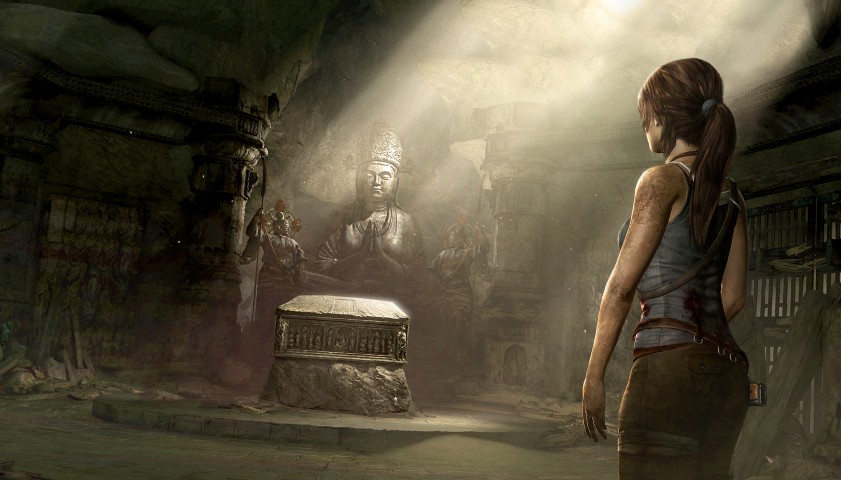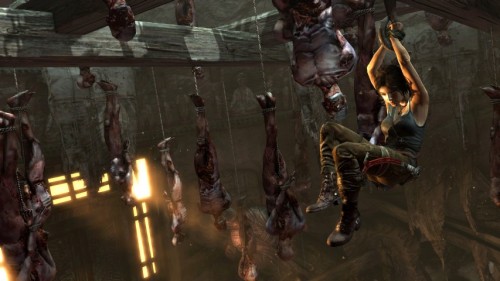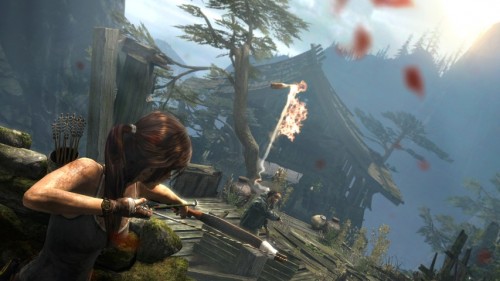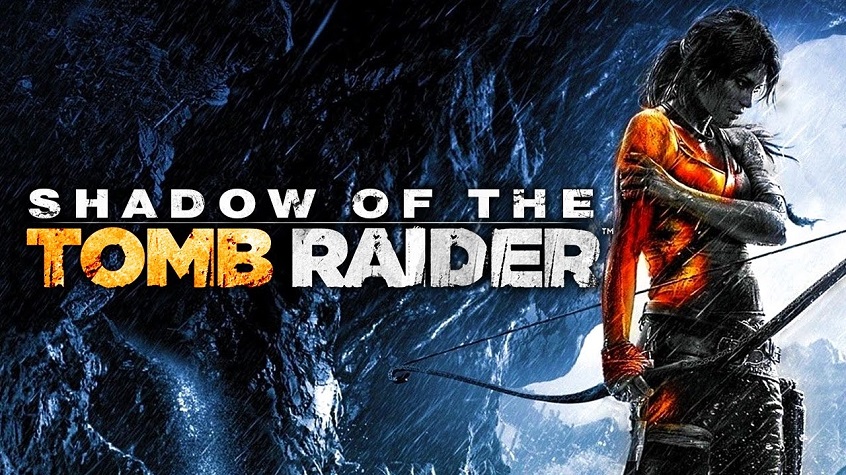
This console generation has been the golden age of reboots. The quickening pace of technology has led to vast improvements in audio, graphics and new gameplay ideas that could have only been dreamt of ten years ago. With these improvements at their fingertips, developers have spent their time taking beloved series and recreating them for long-time fans and the modern audience, for better or for worse. One that has stayed a steady blip on the radar since its announcement in 2011 is Tomb Raider, the latest in a long line of games starring the (in)famous Lara Croft. Gamers who have been holding their breath for this one, let out a sigh of of relief – the wait has been well worth it.
This time around, Tomb Raider explores Lara’s origin story and her evolution from a naive young archaeologist to a hardened warrior and survivor. Shipwrecked after a violent storm sinks the ship she and its crew were on, Lara is forced to fend for herself and uncover the mysteries behind the strange island. While Tomb Raider‘s story is its weakest point, it’s hard to fault how seamlessly the action and cinematics are interwoven. It’s sometimes hard to tell when you can or aren’t control Lara, although the game never blurs the lines to that point in any of its riskier and more challenging moments. Tomb Raider is a beautiful game, with breathtaking scenes and some rather convincingly gruesome areas. There is the odd visual glitch or two or the lack of proper transition between cutscenes and action, but these right themselves quickly. Of course, quick-time-events are right at home in this game but thankfully are used fairly sparingly. For the most part they make good sense in context as well, such as pressing a button to help Lara steady her grip. The same button is used for the same sort of action, which means not having to rely on crazy reflexes as much.
Tomb Raider‘s updated gameplay will inevitably draw comparisons to the Uncharted series, but manages to flesh it out a lot more. A third-person shooter combined with platforming, exploration and role-playing elements, Tomb Raider does everything it sets out to do well. Levels are well-designed and well-paced, with just the right amount of action and exploration occurring in every area of the game. Although the AI has its occasional flaws, Lara’s enemies are cunning, and will attempt to flush out with Molotov cocktails, dynamite, and occasionally plain ol’ brute force. Some full-on firefights can be avoided by employing a stealthier approach, although I found it was generally easier to start the riff-raff. If you do go down the sneaky route, it’s helpful to use Lara’s Survival Instincts, which not only draws attention to where enemies are, but also shows you which enemies will raise an alert if they are killed.
Survival Instincts mode is also extremely helpful when you’re exploring Tomb Raider’s numerous and often vast areas. It highlights all the points of interest in Lara’s view ala Batman‘s Detective Mode, such as elements of the landscape that can be used to progress to the next area. Some of these may be unreachable at certain points in the game, and it’s here that developer Crystal Dynamics’ interesting Metroidvania-style approach rears its head. Throughout the course of the game, different pieces of Lara’s equipment is upgraded to allow for different functions. For example, Lara’s hunting bow can be combined with a rope in order to make a wayline between two sections of an area, and later on the same bow is upgraded to be able to pull areas closed off with steel rope. There is also a more atypical weapon upgrade system (e.g. upgrading a gun so that it holds more ammo or does more damage), with improvements unlocked when you spend the salvage you find on enemy corpses and in boxes scattered around the area. Lara’s abilities and attributes can be upgraded as well, although the points necessary to advance her skills are much more difficult to come by. Skill points are only awarded once a certain number of experience points is collected, which are awarded for killing enemies, hunting, finding artefacts, documents and, as to be expected from a game titled Tomb Raider, discovering and raiding tombs.
The wonderful thing about the exploration element of Tomb Raider is how carefully each area has been crafted. Each area has its own artefact sets, meaning that you don’t have to backtrack aimlessly through numerous areas on the island to try and find missing relics or GPS caches. The location also determines what kind of animals are available to hunt, although despite the scene early on in the game in which Lara kills a deer to eat, the survival elements only serves to be another outlet for XP and thus falls rather flat. It was also cool to note that you can climb almost anything in Tomb Raider, although the few moments where you can’t are glaringly obvious and will undoubtedly lead to frustration. Thankfully, checkpoints are frequent, meaning that any untimely button presses or falls to your doom can be retried fairly quickly.
Tomb Raider is, without a doubt, one of the best reboots that has ever raised its head in the world of video games. The new Lara Croft is more likeable than she ever has been; a realistic portrait of a young woman trapped in a strange world where danger lurks around every corner. A highly-polished, well-designed, thrilling adventure, this is a game that deserves to be on every gamer’s shelf. If this is the future of Tomb Raider, I can’t wait to see more.
Excellent hybrid of multiple genres | Visually stunning | The new Lara Croft is a great character
Lack of any real survival mechanics | Occasionally glitchy







